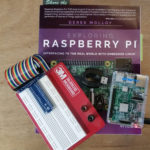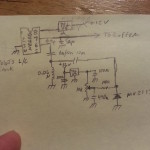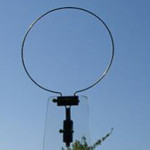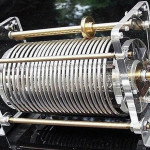Mid May, two months since the last post. What have I been up to?
Of course, I have been doing the regular VE sessions, but other than that… Packing. Lots of packing. We have been planning on relocating for several years now but time has finally arrived that we are moving forward pun intended.
We don’t want to move in the winter and we don’t want to wait another year so… we are gearing up for a move sometime soon. One of the best ways to get ready is to start filtering through all of the stuff that has accumulated over the last 21 years we have been here.
As we shed truck-loads of stuff we just don’t need to Savers and Goodwill, we have been packing up the things we can do without for a few months. Having a bunch of other stuff on the brain, the ham shack, or most of it anyway, was one of the first things to get boxed. So for now, no electronics lab. Nearly all of my test equipment is boxed up. We are up to 40 boxes, filtering and packing more every day.
Lest you think I’m ignoring radio, I have been gearing up to be more active in ARES, RACES, NTS, Skywarn, and CERT by taking a lot of FEMA/DHS classes that are prereqs for various organizations. I am also scheduled to take a BLS class in two weeks which includes CPR, AES and more. I want to add a variety of EmComm instruction to my growing list of classes offered in the near future so I am ticking down the long list of prereqs and associated training.
In a somewhat side related area, I also recently acquired my Remote Pilot certificate with Small Unmanned Aircraft Systems rating. Basically, a commercial UAV pilots license in addition to my commercial airplane pilot certificate. This will allow me to do aerial photography and inspections for pay with a UAV/UAS. And what might I be taking pictures of and inspecting, radio towers???? Possibly.
Anywho, I wanted to post an update so you didn’t think I had abandon radio or the site. I just don’t have a lot to post about other than classes and ratings. I will be doing a mobile install of my FT-817 with a quad-band antenna sometime soon so I will plan on posting about that soon. I may also be posting some short subject videos in the near future as well.
Til next time, 73
~Jon KK6GXG



 Just a short post today. This weekend I held another Technician license class, and it went great!
Just a short post today. This weekend I held another Technician license class, and it went great!
 From a building stand point… nothing new has been going on. I am still working on the Beach 40 and the Bitx 20. The Beach 40 still needs the audio section rebuilt and the Bitx20 needs some troubleshooting . I don’t have the facilities to put up a 20 or 40 meter antenna and since both radios are QRP(p), a good antenna is vital to making any contacts.
From a building stand point… nothing new has been going on. I am still working on the Beach 40 and the Bitx 20. The Beach 40 still needs the audio section rebuilt and the Bitx20 needs some troubleshooting . I don’t have the facilities to put up a 20 or 40 meter antenna and since both radios are QRP(p), a good antenna is vital to making any contacts. From an operators perspective… ya, nothing going on there ether. I need to pull down my Frankenstein/Hill Billy mast because we are having our building painted soon. I have plans for a simpler replacement that should work out fine. I’ll post about that if and or when that happens.
From an operators perspective… ya, nothing going on there ether. I need to pull down my Frankenstein/Hill Billy mast because we are having our building painted soon. I have plans for a simpler replacement that should work out fine. I’ll post about that if and or when that happens. Earlier this year I picked up some Arduino hardware. I haven’t had much time to work with it yet as the Day Job has been keeping me hopping as well as a lot of stuff in the personal life, nothing bad, just a lot of changes and preparations.
Earlier this year I picked up some Arduino hardware. I haven’t had much time to work with it yet as the Day Job has been keeping me hopping as well as a lot of stuff in the personal life, nothing bad, just a lot of changes and preparations. Last week I added a RPi 3B to the hardware pile and began working with it. Along with the Pi I picked up a copy of Exploring Raspberry Pi: Interfacing to the real world with embedded Linux From Wiley written by Derek Molloy.
Last week I added a RPi 3B to the hardware pile and began working with it. Along with the Pi I picked up a copy of Exploring Raspberry Pi: Interfacing to the real world with embedded Linux From Wiley written by Derek Molloy. P.S. Today’s post is brought to you by Hamversary. On this day in 2013 I received my license grant about a week after I walked into the Saratoga Fire Station a non-ham. Since then I have worked my way up to Extra Class, begun teaching license preparation classes to prospective hams, and I have been a Volunteer Examiner for 42 exam sessions, most of them at the Saratoga Fire Station.
P.S. Today’s post is brought to you by Hamversary. On this day in 2013 I received my license grant about a week after I walked into the Saratoga Fire Station a non-ham. Since then I have worked my way up to Extra Class, begun teaching license preparation classes to prospective hams, and I have been a Volunteer Examiner for 42 exam sessions, most of them at the Saratoga Fire Station.
 One significant note, I have surpassed the 25 session count as a Volunteer Examiner! I am now up to 27 sessions. Yesterday (4/4) was also my 1 year anniversary with the Silicon Valley VE Group. I have been a VE since December 2014, but I didn’t begin working sessions until April 2015.
One significant note, I have surpassed the 25 session count as a Volunteer Examiner! I am now up to 27 sessions. Yesterday (4/4) was also my 1 year anniversary with the Silicon Valley VE Group. I have been a VE since December 2014, but I didn’t begin working sessions until April 2015. No concrete plans, just some aspirations. For the moment that’s all I can muster. Life and the Day Job have been at the forefront but no playtime makes for cranky-pants, so I need to figure out a way to make some time. This post is one attempt at making some time.
No concrete plans, just some aspirations. For the moment that’s all I can muster. Life and the Day Job have been at the forefront but no playtime makes for cranky-pants, so I need to figure out a way to make some time. This post is one attempt at making some time.













